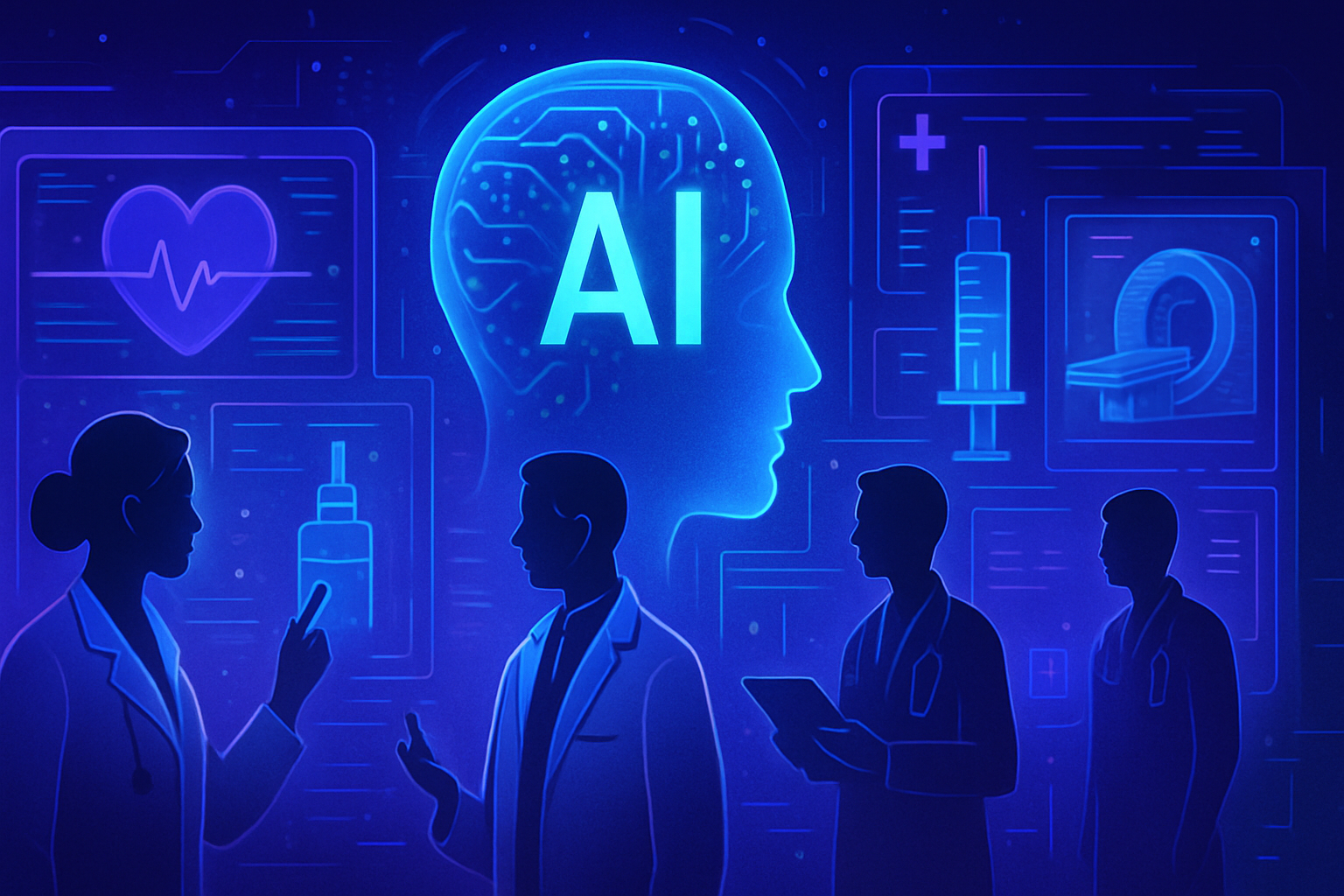The rise of AI in MedTech is transforming the healthcare landscape with radical innovations. Hardware programs are revolutionizing clinical practices, fostering the integration of intelligent solutions. The optimization of processes, particularly through generative AI, opens promising perspectives for research and development. The challenges of data integration and regulations require unprecedented collaboration between healthcare professionals and technicians. The need for effective synergy is felt, as clinical outcomes improve exponentially. These transformations align with an essential quest for efficiency and precision, where every advancement matters for the overall health of patients.
The impact of AI on operational practices in MedTech
Recent advancements in artificial intelligence (AI) are revolutionizing the field of MedTech. The computerization and optimization of processes allow for unprecedented levels of efficiency. Applications are developing in various sectors, notably research and development (R&D), business operations, and supply chain management. Each area explores the potentials offered by generative AI.
Health programs and technological innovation
Medtech companies are establishing themselves as leaders in innovation, capturing significant productivity gains. McKinsey estimates they could achieve between $14 billion and $55 billion in annual gains. The deployment of generative AI in this sector could add more than $50 billion in revenue through the optimization of products and services. A 2024 survey reveals that nearly two-thirds of Medtech leaders have already adopted this technology, with about 20% of them expanding their solutions.
Research and development dynamics
R&D within Medtech companies stands out for its proactive adoption of AI tools. These departments leverage the capabilities of generative AI to streamline workflows, such as synthesizing scientific articles. This phenomenon reflects a trend toward grassroots adoption, where researchers enhance their productivity even without defined corporate strategies.
Increased efficiency in administrative tasks
AI tools enable researchers to accelerate their tasks while still requiring human evaluation to ensure the quality of submissions. A significant reduction in time spent on administrative tasks is observed, with some companies reporting productivity gains of 20 to 30% in their research.
Measuring the success of health product programs
A rigorous assessment of performance is essential for healthcare stakeholders. The primary goal remains to ensure a high level of care while optimizing operations. Analyzing key performance indicators (KPIs) helps providers improve patient outcomes. This includes optimizing resource allocation and fostering continuous improvement across all areas of care.
Relationship between operational efficiency and clinical outcomes
Health product programs revolve around the development, delivery, and continuous optimization of medical products. Success relies on coordination between clinical, technical, regulatory, and commercial teams. The speed of market entry is crucial to quickly move from design to launch.
Innovation and user experience
The evaluation of innovations is no longer solely based on technical performance. User experience (UX) proves equally determinant. The UX Design Awards highlight products that combine technical excellence and quality user experience. These products meet the needs of patients and healthcare professionals while adhering to strict regulatory standards.
Notable examples of innovation
Devices such as Siemens Healthineers’ CIARTIC Move system demonstrate this evolution. This autonomous 3D imaging system allows surgeons to control the device without physical contact. Similarly, ASUS has received accolades for its HealthConnect application and the VivoWatch series, which combine smart health solutions with user-friendly interfaces. These innovations reflect a growing accessibility of medical technologies.
Regulatory compliance and product development
Aligning clinical and regulatory pathways is paramount. Providing real-time feedback on development improves processes. The adoption of generative AI transforms this approach, facilitating the production and revision of complex documents, as well as the management of mixed data. Integrating regulatory considerations from the outset ensures compliance and fosters continuous innovation.
FAQ on the rise of AI in MedTech: hardware programs and clinical applications
What is artificial intelligence and how is it used in the MedTech sector?
Artificial intelligence (AI) refers to systems capable of performing tasks that typically require human intelligence. In the MedTech sector, it is used to enhance processes such as research and development, business operations, and supply chain management.
What are the main benefits of AI in MedTech hardware programs?
The main benefits include process optimization, improved diagnostic accuracy, better operational efficiency, and reduced product development costs.
How does AI influence research and development in the MedTech field?
AI enables rapid processing of large amounts of data, facilitating research result analysis, trend and correlation identification, and accelerating the development of new medical devices.
What challenges do MedTech companies face when integrating AI into their processes?
Challenges include data integration, the need for coordinated strategies between clinical and technical teams, and managing the skills necessary to effectively utilize AI technologies.
How can the adoption of AI improve patient experience in the MedTech sector?
AI adoption can enhance patient experience by providing quicker and more efficient access to medical information, personalizing care, and making medical procedures more precise and less invasive.
What is the impact of AI on the productivity of MedTech companies?
AI can lead to substantial productivity gains, with studies showing improvements of 20% to 30% in some cases by reducing time spent on administrative tasks and optimizing operational processes.
How should companies measure the success of AI integration into their MedTech programs?
Companies can measure success by tracking key performance indicators (KPIs) such as patient care quality, operational efficiency, patient satisfaction, and profitability.
What are the key steps for a successful implementation of AI in MedTech product development?
Key steps include assessing needs, early integration of regulatory considerations, team training, and adopting agile technologies to adapt to market changes.
What are recent examples of innovations using AI in medical technology?
Examples include autonomous 3D imaging systems that enhance surgical precision and connected health applications that increase interaction between patients and healthcare professionals through an intuitive user interface.
How is AI changing compliance standards in the MedTech sector?
AI allows for automating the creation of complex documents and ensuring better regulatory compliance by integrating early checks into the development process, thereby facilitating adherence to ever-evolving standards.






